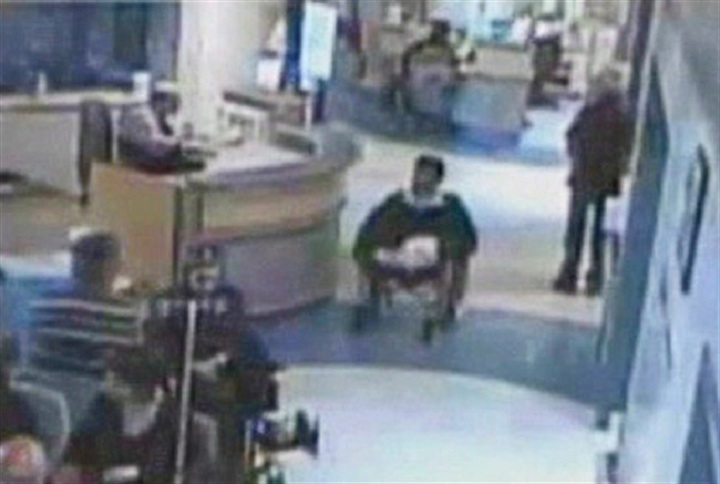WINNIPEG – A nurse who tried to resuscitate a man who died during a 34-hour wait in a Winnipeg emergency room says Brian Sinclair was obviously dead by the time he was brought to the attention of medical staff.

Nic Wedel told the inquest into Sinclair’s death that a security guard brought the 45-year-old over in his wheelchair, saying he was dead and needed help.
Although the security guard testified earlier that Wedel thought he was joking, Wedel said he was just shocked, but quickly called for a resuscitation team to try to save Sinclair’s life.
“He was cool and stiff,” Wedel testified Tuesday. “His eyes were open and fixed. His skin was pale and waxy.”
Wedel said he started to give CPR, but the life-saving efforts of the resuscitation team lasted less than a minute before Sinclair was declared dead.
Wedel was asked why they bothered trying to resuscitate Sinclair when rigor mortis had already set in.
“I felt it was required to do resuscitation efforts to give him a chance,” he said.
Sinclair, a double-amputee, was referred to Winnipeg’s Health Sciences Centre on Sept. 19, 2008, by a community doctor because he hadn’t urinated in 24 hours.
Security footage shows Sinclair speaking to a triage aide upon arrival at the hospital.
- Health task force blasted over ‘dangerous guidance’ for cancer screenings
- Dentists hesitant to sign up for federal dental plan; seniors advised to look at all options
- David Chang’s Momofuku to stop ‘chile crunch’ trademark battle after outcry
- Over 25% of young Canadian deaths linked to opioids amid pandemic: study
The triage aide writes something down on a piece of paper and Sinclair wheels himself into the waiting room. The piece of paper has never been found.
Sinclair is seen waiting in the emergency department for the next 34 hours. Although Sinclair vomited several times as he deteriorated during his wait, he wasn’t seen by medical staff until he had died.
Manitoba’s chief medical examiner testified that Sinclair died of a treatable bladder infection caused by a blocked catheter.
An internal hospital review into Sinclair’s death found some 17 staff members observed the aboriginal man while he languished in the waiting room, but no one asked if he was waiting to see a doctor.
The review said they all made different assumptions about why he was there.
Some assumed he had been triaged already and was waiting for a bed in the back of the treatment area. Others assumed he had been treated and discharged. Still some thought he was drunk and was waiting for a ride under the Intoxicated Persons Detention Act or just needed a warm place to rest.
Sinclair’s family, and others, have alleged racism played a part in how he was treated. But nurse Kathy Collis, who was also working the night Sinclair was discovered, said she doesn’t see her patients that way.
“If you are in a bed, I look after you,” she said. “That’s my job. That’s my responsibility.”
The head nurse working that weekend has already testified the emergency room was overcrowded and short-staffed, operating without a key triage nurse when Sinclair arrived seeking care.
A nurse who would normally triage patients and reassess their condition while they waited was reassigned when Sinclair first showed up at the hospital.
Beth Franklin, the triage nurse on duty when Sinclair came in, testified she didn’t remember seeing the double-amputee.
But she said the layout of the new emergency department, which was opened the previous year, made it very difficult to monitor the waiting area.
“The triage waiting room was completely obstructed from the triage desk,” said Franklin, who worked in the emergency room for 32 years before her retirement in 2009. “We were unable to see the patients.”
An inquest into Sinclair’s death began in August and then reconvened on Monday for the month of October.
Testimony is expected all this month from those who were working at the hospital the weekend Sinclair died.



Comments